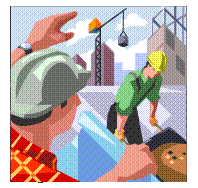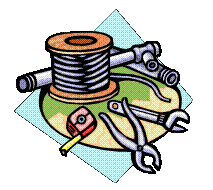Moving Things Into a Healthy Bite Terms
As you’ve seen happens with other sensory systems, craniofacial structural differences may affect your child’s vision throughout their growing years. If you’re familiar with the parts of that puzzle, you’ll be an assistant to us and an encouragement to your child as we take them through the needed corrections and therapy.

Acrylic
Refers to the plastic we use to make false teeth, retainers, and other dental products. Dental acrylic has been tested and is accepted as an entirely safe substance to use in the mouth.
Appliance
Refers to any device worn inside the mouth to change or move the teeth into another position; can also hold teeth in position after movement is accomplished.
Acrylic Infant Palatal Appliance
Refers to a plastic, adjustable device that we use to help close off the inside gap of a cleft palate or cleft alveolar ridge; it also stabilizes the palatal segments (those which are separated but normally joined); and begins to shape the alveolar arch to align with the lower jaw for a healthy bite. A properly shaped arch helps the outcome of later surgery to close the palate.
Archwire, or ‘Wire’
Refers to the metal wire we attach to the brackets on your child’s teeth in order to pull or push against other specific teeth until they are aligned into an even arch shape, and until they’re lined up well with the teeth in the lower jaw. We use different wire strengths according to amount of force we need: Nickel Titanium (medium strength); or stainless steel wire (very strong).
Articulator
Refers to a specialized device that we use to hold models of your child’s teeth; while in the articulator, we can adjust the positions of the jaws with relation to each other just as they are positioned within your child’s head so that our Orthodontist and Surgeon can examine your child’s bite with great accuracy, make pre-surgery measurements, and create a precise surgery plan resulting in correct 3-dimensional alignment.
Band
Refers to the metal ring we place on your child’s teeth to allow us to firmly hold parts of the braces.
Band Remover
Refers to a special pair of pliers which our Orthodontist uses to take the bands off your child’s teeth. These are usually a welcome sight for our patients, families, and for us!
Biomechanics
Refers to the way living tissue (e.g., teeth and gums) moves and changes in response to applied force.
Biteplane
Refers to a removable acrylic appliance we design to help open up a ‘deep’ bite.
Bite Stick
Refers to a tool our Orthodontist uses to put bands onto your child’s braces: after placing the band on the proper location on the teeth/brackets, we will push a bite stick against the band while your child bites down. This pushes the band into place.
Bracket
Refers to the metal or ceramic fastening segment of your child’s braces; we glue them onto the teeth we’re moving to provide an anchor onto which we can fasten and position the archwire.
Breakaway
Refers to a small piece of plastic which we use to put force onto a facebow; the piece contains an inner spring allowing us to create different levels of force.
Buccal Tube
Refers to the tiny metal tube we attach to various brackets on the cheek (buccal) side of the teeth, along the molar row; the tube is designed with little open slots to hold archwires, a lip bumper, head gear, a facebow, and/or other tooth-moving devices.
Chain, Orthodontic Chain
Refers to a connected series of elastic o-rings which we position around your child’s brackets and over the archwire to hold the archwire in place and to move teeth.
Coil Spring
Refers to the spring we place between your child’s brackets and over the archwire to open space between your child’s teeth.
Elastics
Refers to the rubber bands of various strengths which we use to move specific teeth or
to pull your child’s jaws into position for a healthy bite.
Facebow
Refers to an externally worn frame-like device that pushes back against your child’s upper front first molars to make room for crowded or protruding front teeth. It includes both an internal and external wire bow, and attaches onto the inside upper jaw by a fixed upper molar buccal tube; on the lower jaw, it’s attached to a safety strap of your child’s headgear’s night-brace. The safety strap keeps the facebow in place, preventing loosening and injury.
Facial Mask
Refers to a special device worn outside of the mouth, framing the face, designed to place constant tension on one or both of the jaw bones to move them forward in relationship to the rest of the face.
Hawley with Expander Screw
Refers to the kind of retainer we use to maintain teeth, jaw, and joint changes we’ve accomplished during your child’s orthodontic treatment; we use its small built-in screw to expand it at the appropriate rate, working against the contraction force created as the muscles and soft tissues heal into permanent position.

Headgear
Refers to the external device we give your child to wear, giving us a fixed surface against which to set up the tension or traction needed to move teeth.
Herbst Appliance
Refers to the device we use to move the jaw forward by using the other jaw as an anchor; it may include an expansion screw to widen the upper jaw at the same time. The appliance fits inside the mouth, connecting the upper and lower jaws, attached by brackets to each side of the upper and lower molar bands; it can be either removable or fixed.
Fixed Appliance
Refers to a any of the devices your child may wear during their treatment which are ‘fixed’ into position rather than being removable.
Functional Appliance
Refers to a device designed to be worn on the teeth which allows speaking, eating, and swallowing; the device becomes a source of force against the teeth and jaws. Sometimes it may be referred to as: an orthopedic corrector, activator, bionator, twin block appliance, Frankel appliance, or Herbst appliance.
Le Fort Advancement Procedures
Refers to any of three procedures designed to move one or more parts of the facial skeleton forward in reference to the rest of the face. We can use this to help correct jaw position (Le Fort I), mid-face position (Le Fort II), or the position of the eye/orbit and brow area (Le Fort III).
Lingual Expander
Refers to the custom-shaped wire/acrylic device we place down inside your child’s lower dental arch apply pressure to the left and right sides of the arch and widen it (lingual= related to the tongue).
Lip Bumper
Refers to the appliance we use to push back the molars on your child’s lower jaw, creating
needed space for other nearby teeth; it includes an arch wire attached to a molded piece of
plastic and mounted into the buccal tubes on your lower teeth; the plastic piece rests up
against your lips, so that when you eat or talk you push the plastic piece backwards,
placing force on your molars to move them back. The lip bumper can also cause forward
movement of the lower front teeth and make room for teeth in that part of the arch.
Ligature
Refers to the thin wire we use to hold your child’s archwire in the tooth brackets.
Mouthguard
refers to the important, protective device we advise all our orthodontic patients to wear when playing sports. It helps prevent mouth and teeth injury, thereby guarding the critical work we’ve done.
Neck Pad
Refers to a cloth-covered cushion that we place around your child’s neck to be worn along with his or her facebow; we attach ‘breakaways’ to the neck pad as a means of creating force on the facebow.
Palatal Expander
Refers to the appliance we design to fit up against your child’s inside upper arch to apply pressure forward and outward, allowing us to expand or widen both the hard and soft tissues.
Retainer
Refers to the device we make for your child to wear after we remove his or her braces, designed to maintain the changes we’ve accomplished during treatment; we may attach it to the upper and/or lower teeth. Some are removable, some are fixed into position, some are expandable as needed to work against the contraction forces exerted by your child’s healing tissues.
Safety Strap
Refers to the strong plastic strap holding your child’s facebow in position so that it won’t come loose and hit them.
Separators
Refers to tiny elastic bands or tiny plastic or metal parts that we fit in between teeth positioned too tightly together; the separator gently creates an inter-tooth space large enough for band placement.
Space Maintainer
Refers to the device we use to hold open a place for an incoming permanent tooth, following premature loss of a decayed or accidentally damaged baby tooth.
Splint
Refers to the post-surgical device we construct to hold your child’s mouth and jaws in their
new, corrected position. We construct this prior to surgery based on the ideal final
post-surgery position.
Trans-Palatal Appliance
Refers to the custom-shaped wire/acrylic device we place up against the roof of your child’s mouth to apply pressure to the left and right sides of the upper arch (trans=across; palatal=of the palate).
Tie Wire
Refers to the very thin wire we twist around the brackets, holding the archwire in place.
‘W’ Appliance
Refers to the W-shaped wire device which we place into your child’s upper and/or lower arch to maintain the width and shape obtained so far in treatment.
Wax
Refers to the clear, tasteless wax we rub onto your child’s brackets and other braces ‘parts’ so that they don’t rub against his or her lips and tongue; it helps prevent irritations from developing when we first attach the braces, and at other times as needed.